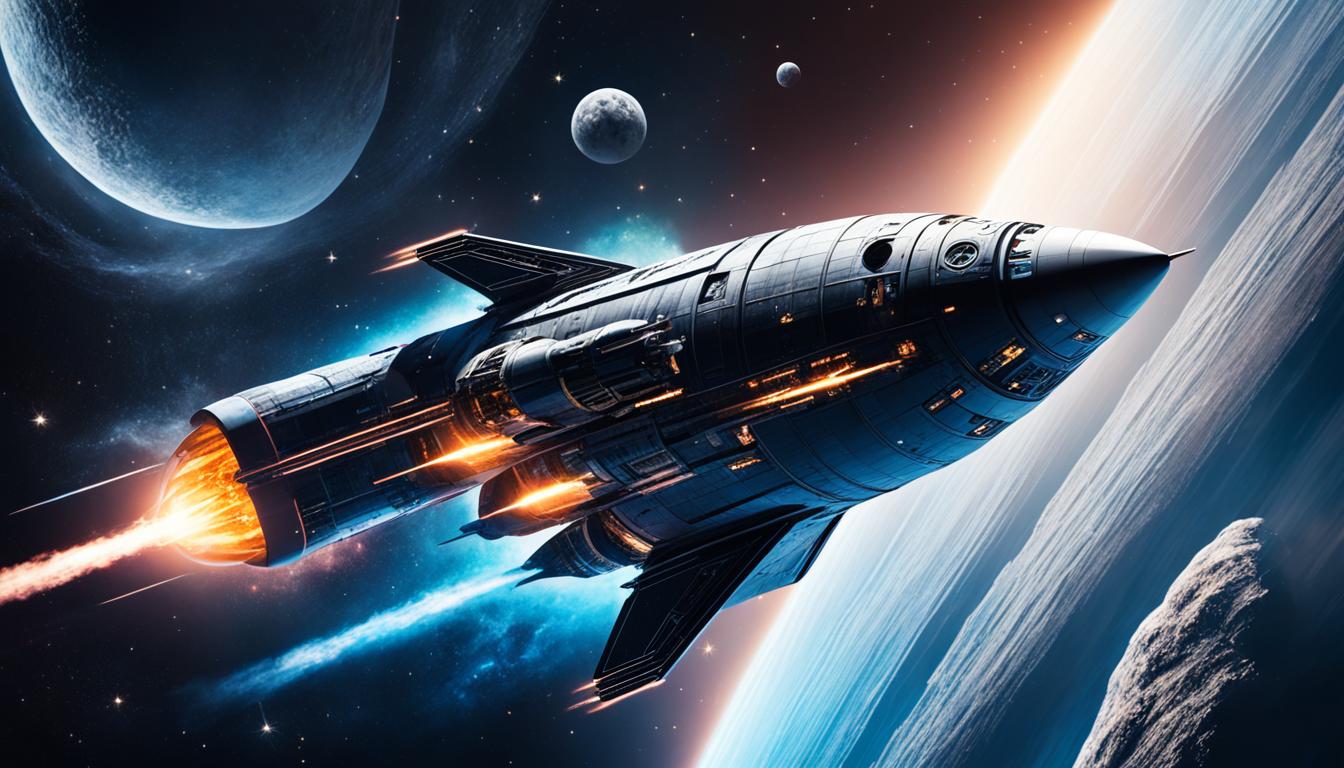Have you ever wondered how long it takes to travel to the Moon? The journey to our celestial neighbor is a fascinating topic that captivates the imaginations of many. In this article, we will explore the duration of a lunar journey, shedding light on the time it takes for spacecraft and astronauts to reach the Moon and orbit its surface.
How Long Does it Take to Get to the Moon?
Have you ever wondered how far away the moon is from Earth or how long it takes to travel there? Let’s explore the fascinating details of the journey to our celestial neighbor.
The average distance between the Earth and the Moon is approximately 384,400 kilometers (238,855 miles). To put that into perspective, it would take about 1.3 seconds for light to travel from the Moon back to the Earth. However, the distance can vary depending on the Moon’s position within its elliptical orbit.
On average, a journey to the Moon from Earth takes approximately three days. It’s important to note that the exact duration can vary due to factors such as the speed of travel, the specific route taken, and the objectives of the mission. Let’s take a closer look at some remarkable examples:
- The New Horizons spacecraft holds the record for the fastest journey time to the Moon, completing the trip in just 8 hours and 35 minutes.
- The Luna 1 spacecraft, the first to attempt reaching the Moon, took approximately 34 hours to reach the vicinity of our lunar companion.
- The Apollo missions, renowned for their lunar orbit and landing achievements, averaged a travel time of 78 hours to reach lunar orbit.
While these examples provide crucial insights, it’s important to remember that the duration of a journey to the Moon can vary depending on various mission-specific factors.
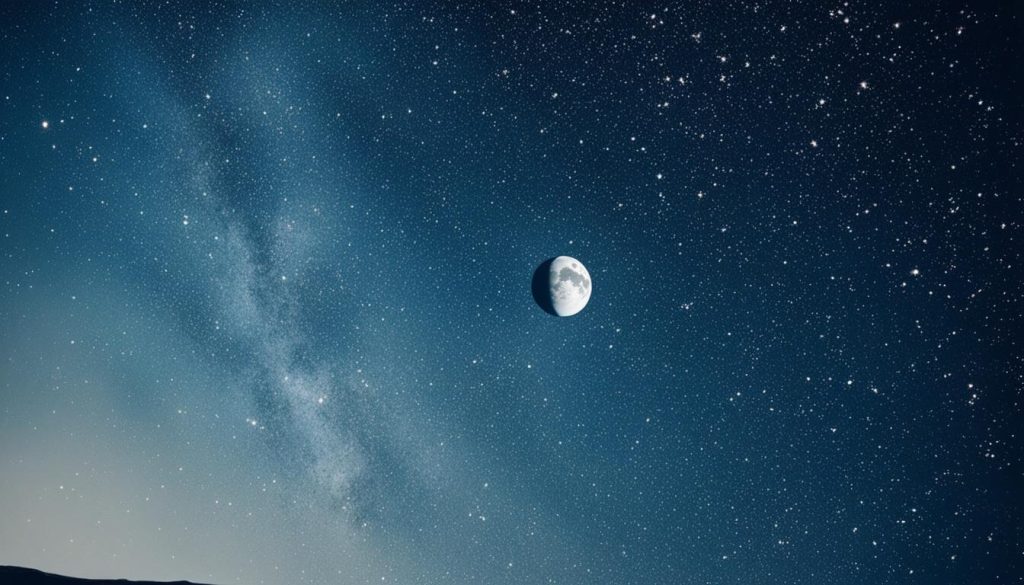
| Mission | Duration |
|---|---|
| New Horizons | 8 hours and 35 minutes |
| Luna 1 | 34 hours |
| Apollo missions (average) | 78 hours |
As we can see, reaching the Moon is no small feat, whether it’s a historic Apollo mission or the cutting-edge technology of the New Horizons spacecraft. These incredible journeys remind us of the vastness of space and the remarkable achievements of human exploration.
Human and Robotic Missions to the Moon
The Apollo missions, consisting of both crewed and uncrewed missions, had an average duration of 78 hours (3 days and 6 hours) to enter lunar orbit. The quickest mission, Apollo 8, achieved this feat in just 2 days, 21 hours, and 8 minutes, while the longest mission, Apollo 17, took 3 days, 14 hours, and 41 minutes. On the other hand, probes such as the New Horizons probe can reach the Moon in approximately 8.5 hours. However, the duration may vary for other probes depending on the propulsion system utilized.
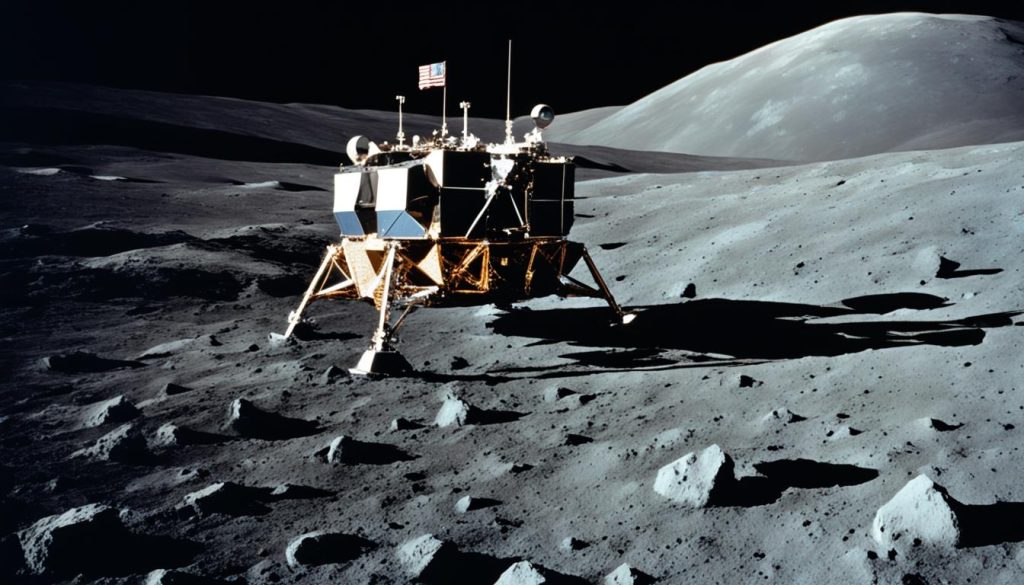
Apollo Missions to the Moon
The Apollo missions were a series of space expeditions conducted by NASA with the objective of landing humans on the Moon. These missions involved a combination of spacecraft, including the command module, lunar module, and Saturn V launch vehicle.
Here is a summary of the Apollo missions, their duration to reach the Moon, and their key accomplishments:
| Mission | Duration to Reach the Moon | Key Accomplishments |
|---|---|---|
| Apollo 8 | 2 days, 21 hours, and 8 minutes | First manned mission to orbit the Moon |
| Apollo 11 | 2 days, 19 hours, and 40 minutes | First manned lunar landing |
| Apollo 13 | 3 days, 2 hours, and 7 minutes | Abort mission due to a critical failure but successfully returned to Earth |
| Apollo 17 | 3 days, 14 hours, and 41 minutes | Last manned mission to the Moon |
The Apollo missions represented a major milestone in human space exploration, expanding our understanding of the Moon’s geology, conducting experiments, and collecting valuable samples.
Robotic Missions to the Moon
In addition to the Apollo missions, various robotic missions have been sent to the Moon to study its surface and gather scientific data. These missions have played a crucial role in advancing our knowledge of the lunar environment.
One notable example is the New Horizons probe, which reached the Moon in around 8.5 hours. Equipped with advanced instruments, New Horizons provided valuable insights into the Moon’s composition and geological characteristics.
Other robotic missions, such as the Lunar Reconnaissance Orbiter, the Chang’e series from China, and the Chandrayaan program from India, have also contributed significantly to our understanding of the Moon.
Overall, both human and robotic missions to the Moon have been instrumental in expanding our knowledge of Earth’s closest celestial neighbor.
Duration of Lunar Orbit and Exploration
Once a spacecraft reaches lunar orbit, the duration of its stay depends on the objectives of the mission. The Apollo missions typically spent several days in lunar orbit, ranging from 6 to 13 days, depending on the specific mission. During this time, astronauts performed various experiments, collected samples, and conducted scientific research.
The duration of an individual lunar exploration mission can vary, but it generally extends beyond the time it takes to reach the Moon itself.
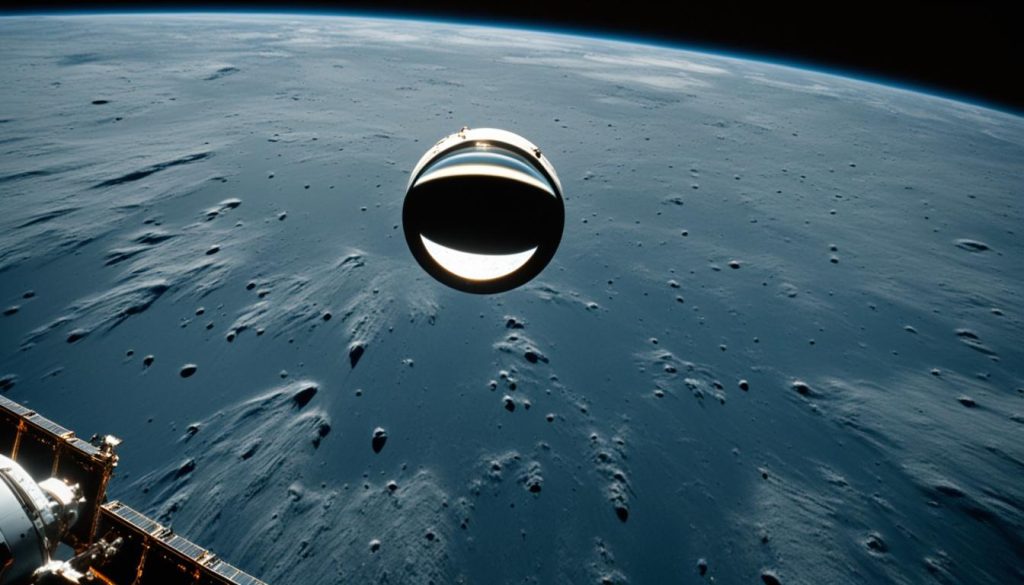
Lunar Orbit Duration Comparison
| Mission | Lunar Orbit Duration |
|---|---|
| Apollo 11 | 6 days |
| Apollo 16 | 11 days |
| Apollo 17 | 13 days |
As illustrated in the table above, the duration of lunar orbit can vary depending on the mission. The Apollo missions, which were the first to land humans on the Moon, spent between 6 and 13 days in lunar orbit. This extended period allowed the astronauts to conduct in-depth research and exploration activities, contributing to our understanding of the Moon and its environment.
Lunar Phase Cycle and Moon’s Rotation
The lunar phase cycle refers to the complete cycle of moon phases. It takes 29.5 days for the Moon to complete one full cycle, from new moon to new moon. However, the Moon’s orbital period, which is the time it takes for the Moon to orbit the Earth once, is slightly shorter at 27.3 days. This difference in duration arises because the Moon needs a couple of extra days to catch up and return to the same point in space relative to the Sun, resulting in the 29.5-day lunar phase cycle.
Interestingly, the Moon’s rotation period is the same as its orbital period. This means that it takes 29.5 days for the Moon to complete one rotation on its axis. As a result, the same side of the Moon always faces the Earth, a phenomenon known as tidal locking.
To help visualize the lunar phase cycle and the Moon’s rotation, refer to the diagram below:
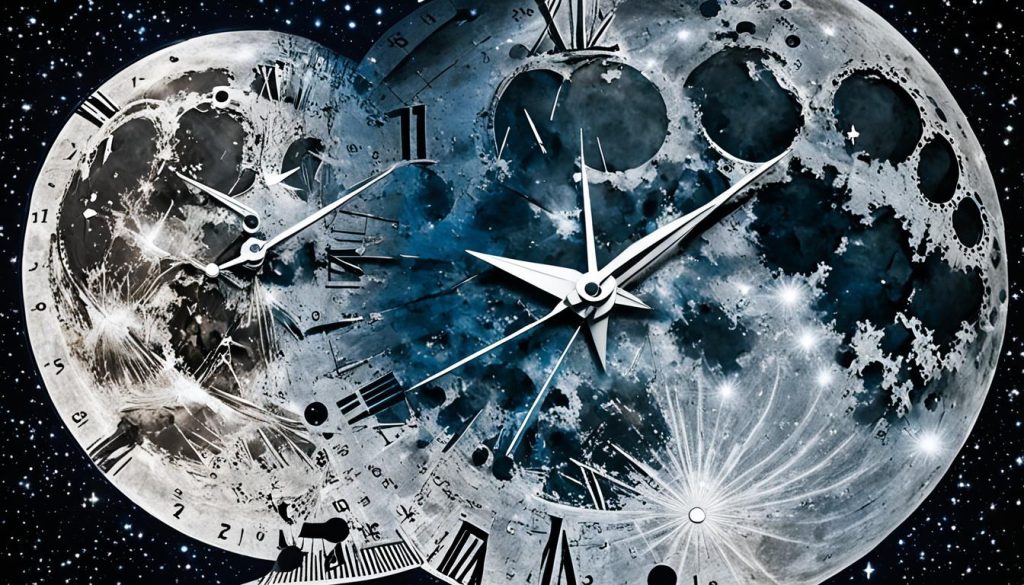
| Lunar Phase Cycle | Orbital Period | Rotation Period |
|---|---|---|
| 29.5 days | 27.3 days | 29.5 days |
In summary, the lunar phase cycle takes 29.5 days to complete, while the Moon’s orbital period and rotation period both last for 27.3 days. This information helps us understand the fascinating relationship between the Moon, the Earth, and their movements in space.
Speed and Duration of Lunar Travel
The speed and duration of lunar travel depend on several factors, including the type of spacecraft and propulsion system used. Past missions have shown that it usually takes about three days for a manned spacecraft to reach the Moon. In terms of speed, this translates to approximately 3,333 mph (5,364 kph). Uncrewed missions may take longer to reach the Moon, with some missions taking four to five days. The specific trajectory and mission objectives also play a role in determining the duration of the journey.
When it comes to manned missions, the travel time to the Moon is influenced by the capabilities of the spacecraft and the propulsion system. The Apollo missions, for example, used the Saturn V rocket to carry astronauts to the Moon. These missions typically took around three days to reach lunar orbit. The spacecraft’s engines provided the necessary thrust to overcome Earth’s gravity and propel the astronauts towards the Moon.
Uncrewed missions, on the other hand, may have different objectives and constraints. These missions can take longer to reach the Moon due to factors such as navigation requirements, fuel constraints, or the need to perform complex trajectory maneuvers. For instance, the Lunar Reconnaissance Orbiter (LRO), launched in 2009, took four days to reach the Moon. The LRO’s mission was to gather detailed information about the lunar surface and environment, requiring a specific trajectory and careful mission planning.
It’s important to note that the duration of lunar travel can vary depending on technological advancements and mission requirements. Future missions, such as NASA’s Artemis mission, aim to return humans to the Moon and establish a sustainable presence. The duration of these missions and the time it takes for astronauts to reach the Moon will depend on factors such as the development of advanced propulsion systems and optimized mission planning.
Lunar Travel Comparison
| Mission Type | Duration | Speed |
|---|---|---|
| Apollo Missions | Average of 3 days | Average speed of 3,333 mph (5,364 kph) |
| Lunar Reconnaissance Orbiter (LRO) | 4 days | N/A |
| Future Artemis Mission (planned) | TBD (To Be Determined) | TBD (To Be Determined) |
Future Lunar Missions
NASA’s Artemis mission is a bold endeavor that aims to bring people back to the Moon for the first time since 1972. This ambitious mission is driven by the desire to expand human knowledge, conduct scientific research, and pave the way for future deep space exploration.
The duration of the Artemis mission, as well as the time it takes for astronauts to reach the Moon, will depend on various factors. Technological advancements in spacecraft design, propulsion systems, and mission planning will all contribute to the efficiency and speed of the journey.
Currently, Artemis 3 is the mission that is expected to land astronauts on the lunar surface. While the exact timeline is subject to change, this mission is tentatively planned for the year 2026, at the earliest. However, it’s important to note that the specific duration of the mission and the time it takes to reach the Moon will be determined closer to the launch date, as NASA refines its plans and takes into account the latest technological developments.
Artemis represents a significant milestone in the exploration of the Moon, laying the foundation for future missions that will enable humans to establish a sustainable presence on Earth’s celestial neighbor.
| Artemis Mission Duration | Artemis Mission Timeline |
|---|---|
| Subject to planning and technological advancements | Tentatively planned for 2026 or later |
What to Expect from Artemis?
- A return of human astronauts to the lunar surface
- Advancements in space technology and engineering
- New scientific discoveries and research opportunities
- Development of sustainable infrastructure on the Moon
- Collaboration with international partners
Conclusion
The duration of a journey to the Moon varies depending on factors such as the speed of travel, the specific mission objectives, and the type of spacecraft used. On average, it takes about three days to reach the Moon from Earth. However, the fastest recorded journey time is 8 hours and 35 minutes by the New Horizons spacecraft. The Apollo missions, which included both orbiting and landing on the Moon, took an average of 78 hours to reach lunar orbit. Future missions, such as NASA’s Artemis mission, will further contribute to our understanding of lunar travel and exploration.
Exploring the Moon and unraveling its mysteries has been a remarkable feat of human exploration. From the historic Apollo missions to the current and future robotic missions, our journeys to the Moon have provided invaluable knowledge about our celestial neighbor. As technology advances and our understanding deepens, we can look forward to more ambitious lunar missions that will push the boundaries of human exploration even further.
So the next time you gaze at the Moon and wonder about the incredible journey to reach it, remember that it takes more than just determination and scientific prowess. It requires meticulous planning, advanced spacecraft, and expertise to navigate the vast expanse of space. While the duration of a lunar journey may vary, the destination remains a symbol of human curiosity and the innate urge to explore the unknown.
FAQs
How far away is the Moon from Earth?
The average distance between the Earth and the Moon is 384,400 km (238,855 miles).
How long is a day on the Moon?
The Moon’s rotation period is the same as its orbital period, meaning it takes 29.5 days for the Moon to complete one rotation.
How long would it take to get to the Moon in a rocket?
The speed and duration of lunar travel depend on factors such as the type of spacecraft and propulsion system used. On average, it takes about three days to reach the Moon from Earth.
What is the duration of the Artemis mission?
The duration of the Artemis mission and the time it takes for astronauts to reach the Moon will depend on various factors, and specific details will be determined closer to the launch date.

